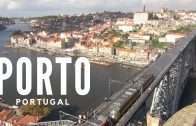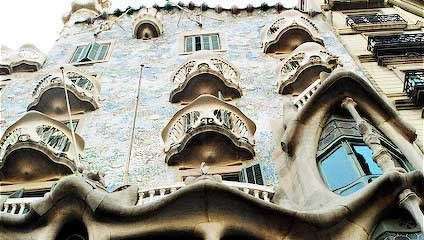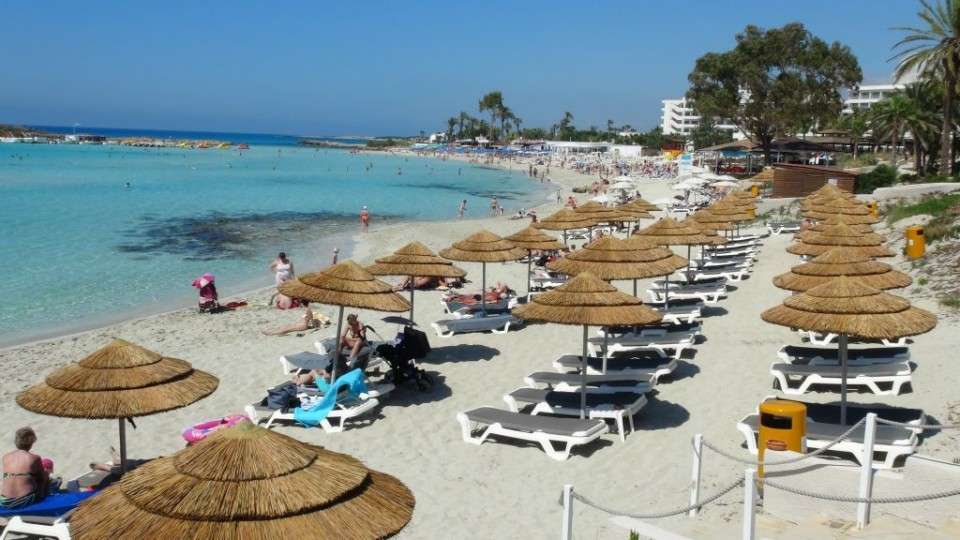A tour of Lisbon – the oldest city in Western Europe
Lisbon is Western Europe’s oldest city, even predating capitals such as Rome, Paris and London. The largest city and capital of Portugal is a thriving centre for culture and commerce, Lisbon is one of the world’s most liveable cities and a fantastic place for a city break.
Lisbon is Portugal’s hilly, coastal capital city. From imposing São Jorge Castle, the view encompasses the old city’s pastel-coloured buildings, Tagus Estuary and Ponte 25 de Abril suspension bridge.
Portugal is the third most peaceful country in the world in the ranking of 163 countries in the 2017 Global Peace Index, Iceland came top, followed by New Zealand.
The compact, cobblestoned heart is easily explored on foot or via its old-fashioned trams and funiculars. The Moorish Alfama district has narrow, winding streets and taverns with fado singers. Chiado and its cafes, shopping and seafood restaurants adjoin Bairro Alto, known for nightlife. On the waterfront are the ornate 16th-century Jerónimos Monastery and Belém Tower, and, to the east, the ultramodern Parque das Nações district and its massive Oceanário aquarium.
Pasteis de Nata is a Lisbon delicacy and the most famous dessert, along with traditional salted bacalhau (codfish) used in many of its famous dishes.
One of the most impressive landmarks is the Portuguese pavement, a whimsy design of rock set by hand, pays tribute to the attention to detail and artistry to enhance the environment of such a beautiful city and culture.
Lisbon trams were originally called Americanos and the first operational route was made in 1873. Despite the fact that it is public transport, hundreds of tourists find it very exciting to take a tram ride around the city.
On November, 1st of 1755, a terrible earthquake – known as the Great Lisbon earthquake struck the capital. It destroyed many ancient buildings and triggered a tsunami which engulfed the harbour and downtown area of Lisbon, which then suffered from a huge fire that lasted for six days.
The Pombaline Baixa district was primarily constructed after the 1755 Lisbon earthquake. The Marquis of Pombal imposed strict conditions on rebuilding the city, and the current grid pattern strongly differs from the organic street plan that characterised the district before the earthquake. The Pombaline Baixa is one of the first examples of earthquake-resistant construction. Architectural models were tested by having troops march around them to simulate an earthquake.
Baixa is Lisbon’s historic heart and commercial centre. Neoclassical architecture, built after the 1755 earthquake, surrounds Commerce and Rossio squares. Bustling pedestrianized streets lined with traditional seafood restaurants and souvenir shops. Baixa in downtown Lisbon is the city’s main shopping and banking district. The ornate city centre is flagged by tiled art deco shop fronts, pastry shops and tailors. The baroque streets are named according to the shopkeepers and craftsman who traded in the area.
The Rua Augusta Arch is a stone, triumphal arch-like and historical building on the Praça do Comércio. It was built to commemorate the city’s reconstruction after the 1755 earthquake. It has six columns and is adorned with statues of various historical figures. The associated space is filled with the coat of arms of Portugal. The allegorical group at the top, made by French sculptor Célestin Anatole Calmels, represents Glory rewarding Valor and Genius.
Rossio Square is the popular name of the Pedro IV Square (Praça de D. Pedro IV), located in the centre of Lisbon has been one of its main squares since the Middle Ages. It has been the setting of popular revolts and celebrations, bullfights and executions, and is now a preferred meeting place of Lisbon natives and tourists alike. The current name of the Rossio pays homage to Pedro IV, King of Portugal. The Column of Pedro IV is in the middle of the square.
Avenida da Liberdade is an important avenue in central Lisbon. It is a 90 metre-wide boulevard, 1100 m long, with ten lanes divided by pedestrian pavements decorated with gardens, referred to by the inhabitants of Lisbon simply as the “Avenida” (the Avenue). It is considered as the 35th most expensive avenue in the world.
Alfama is the oldest district of Lisbon, spreading on the slope between the São Jorge Castle and the Tejo river. Its name comes from the Arabic Al-hamma, meaning “hot fountains” or “baths”. During the times of Moorish domination, Alfama constituted the whole of the city, which later spread to the west. Alfama became inhabited by the fishermen and the poor, and its condition as the neighbourhood of the poor continues to this day. The great 1755 Lisbon earthquake did not destroy the Alfama, which has remained a picturesque labyrinth of narrow streets and small squares. Lately, the neighbourhood has been invigorated with the renovation of the old houses and new restaurants where Fado—Portuguese typical melancholy music—can be enjoyed.
In the slopes of Alfama there are other terraces (miradouros) from which to see the city, like the Miradouro de Santa Luzia, near the church of the same name and over remnants of the Moorish city walls, and the Miradouro das Portas do Sol (Gates of the Sun). Near Miradouro of Santa Luzia is located the Museum of Decorative Arts (Museu de Artes Decorativas), a 17th-century mansion with magnificent interiors.
Overlooking the Alfama is the mediaeval Castle of São Jorge, a royal residence until the early 16th century and now offering the best views of the city. São Jorge Castle is a Moorish castle occupying a commanding hilltop overlooking the historic centre of the Portuguese city of Lisbon and Tagus River. The strongly fortified citadel dates from the medieval period of Portuguese history and is one of the main tourist sites.
Eduardo VII Park, Parque Eduardo VII, is the largest park in the centre of Lisbon to the north of the Avenida da Liberdade. Its name pays homage to Edward VII of the United Kingdom who visited Portugal in 1902, to strengthen the relations between the two countries. Until that visit, its name was Liberty Park (Parque da Liberdade).
Wander the steep cobbled streets of bohemian Bairro Alto to ride the Bica Funicular, visit lavish São Roque Church and take in the views from Miradouro de São Pedro de Alcântara. After sundown, a diverse crowd fill the hip, quirky bars, while the evocative sound of Fado music is heard from traditional restaurants.
The Santa Justa Lift, also called Carmo Lift, is an elevator, or lift. The Ascensor de Santa Justa, street elevator, which connects two parts of the city by taking passengers from Baixa with the higher Largo do Carmo (Carmo Square) district which is 45 meters higher.
Church of Santa Engrácia is a 17th-century monument is located in the Alfama neighbourhood of Lisbon. Originally a church, in the 20th century it was converted into the National Pantheon, in which important Portuguese personalities are buried.
Carmo Convent is a former Catholic convent founded in 1389. The medieval convent was ruined during the sequence of the 1755 Lisbon earthquake, on the southern facade of the convent is the main trace of the great earthquake still visible in the old city. The Carmo Archaeological Museum is situated in the ruins.
Ascensor da Glória, Glória Funicular, sometimes known as the Elevador da Glória, is a funicular that connects the Pombaline downtown with the Bairro Alto. The tram system is situated in an urban area, that extends from the Avenida da Liberdade to the Rua de São Pedro de Alcântara, crossing a built-up area of 19th century buildings.
Belém Tower, or Torre de Belem, is a UNESCO World Heritage Site. It was built during the Age of Discoveries as a military fortification. The monument representing the map of Portuguese conquests, but it was used as a political prison during the Liberal Wars of the 19th century. The tower was commissioned by King John II to be part of a defence system at the mouth of the Tagus river and a ceremonial gateway to Lisbon.
Built in the early 16th century is a prominent example of the Portuguese Manueline style, but it also incorporates hints of other architectural styles. The structure was built from Lioz limestone and is composed of a bastion and a 30-metre (98.4 ft), four-storey tower. It has incorrectly been stated that the tower was built in the middle of the Tagus and now sits near the shore because the river was redirected after the 1755 Lisbon earthquake. In fact, the tower was built on a small island in the Tagus River near the Lisbon shore.
Jerónimos Monastery or Hieronymites Monastery is a former monastery is one of the most prominent examples of the Portuguese Late Gothic Manueline style of architecture in Lisbon. It was classified a UNESCO World Heritage Site, along with the nearby Tower of Belém, in 1983.
The Jerónimos Monastery replaced the church formerly existing in the same place, which was dedicated to Santa Maria de Belém and where the monks of the military-religious Order of Christ provided assistance to seafarers in transit. The existing structure was inaugurated on the orders of Manuel I at the courts of Montemor o Velho in 1495. The Hermitage of Restelo (Ermida do Restelo), as the church was known, was where Vasco da Gama and his men spent the night in prayer there before departing on their expedition to the Orient in 1497.
Padrão dos Descobrimentos, Monument of the Discoveries, originally built for the 1940 World Exhibition is a monument on the northern bank of the Tagus River estuary, where ships departed to explore and trade with India and the Orient, the monument celebrates the Portuguese Age of Discovery (or Age of Exploration) during the 15th and 16th centuries.
In no way do I cover everything there is to see in Lisbon, but this list does complete some of the most fascinating places of interest, in what ultimately is the oldest city in western Europe.















